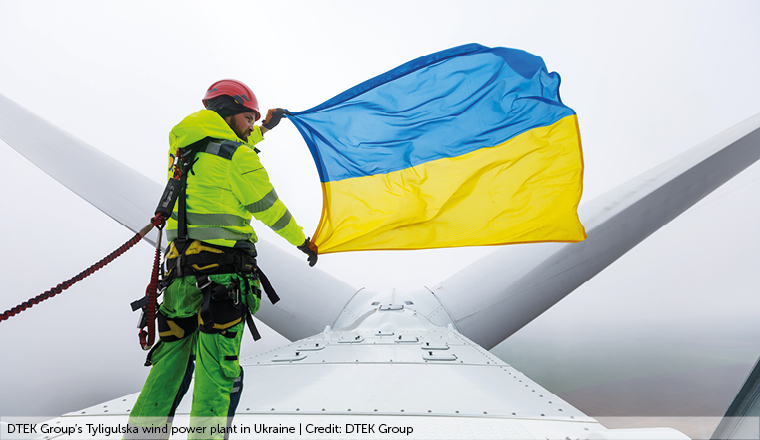Published: February 2, 2024
Ukraine’s electricity grid remains operational despite another tough winter – but renewables are needed to boost resilience, says Olga Yeriomina at the EBRD.
In December 2023, the EBRD announced it would be lending a further €150m to support Ukrainian electricity provision. The loan, to state energy utility Ukrenergo, is just the latest in a series of funding packages already issued since the start of the Russian invasion.
“Since the start of the war, the bank has invested more than €670 million into Ukraine’s power sector, with a primary focus on maintaining stable functioning of the entire power grid,” Olga Yeriomina, associate director of power and energy utilities at EBRD, tells EMEA Finance. “It's worth mentioning that the energy sector was the core focus of our operations in Ukraine even prior to the war. But after Ukrenergo’s grid was severely damaged by Russian missiles and drones, we stepped up our emergency support.”
The new funding will be used to support the continued functioning of the transmission infrastructure, even under the most challenging circumstances. It involves a risk sharing agreement with Norway, which has provided a first loss risk cover guarantee for up to 48% of the loan, as well as a €10m parallel grant funding from Italy.
“This is a liquidity programme provided with a loan maturity, for Ukrenergo to have a longer period of repayment given its difficult financial position,” comments Yerionima. “In previous years we were able to take only partial risk on our balance sheet, so all our loans to Ukraine required external guarantees.”
You will never walk alone
Before the war, the EBRD issued about €1bn a year in loans to Ukraine. This figure rose to €1.7bn in 2022 and approximately €2bn in 2023, and it’s poised to reach €3bn a year once reconstruction is fully underway. Already, the bank lays claim to being Ukraine’s biggest institutional investor. It lends to state-owned enterprises and the private sector alike, with a view to boosting the Ukrainian economy and reducing the country’s reliance on foreign aid.
If the EBRD should describe Ukraine as its ‘priority’, and the energy sector as its priority within that, this should come as no surprise. Since the start of the war, around 50% of Ukraine’s transmission and generation assets have been severely damaged or destroyed. Ten million Ukrainians were left without power following the worst round of attacks in October 2022.


